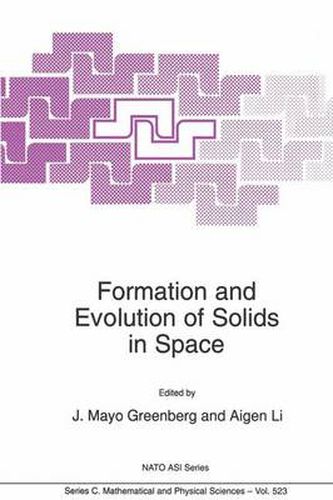Readings Newsletter
Become a Readings Member to make your shopping experience even easier.
Sign in or sign up for free!
You’re not far away from qualifying for FREE standard shipping within Australia
You’ve qualified for FREE standard shipping within Australia
The cart is loading…






This title is printed to order. This book may have been self-published. If so, we cannot guarantee the quality of the content. In the main most books will have gone through the editing process however some may not. We therefore suggest that you be aware of this before ordering this book. If in doubt check either the author or publisher’s details as we are unable to accept any returns unless they are faulty. Please contact us if you have any questions.
Interstellar dust, meteorites, interplanetary dust particles (IDP’s), the zodiacal light, comets, comet dust. Where do they come from, what are they made of, how do they evolve, and finally, are there connections between them? These are the questions discussed in this volume by some of the world’s outstanding experts in their respective fields. The techniques used for studying the “small’ solid objects of space are thoroughly discussed. Some of the methods involve a synthetic approach using the laboratory to create analog environments and materials which are believed to resemble those in space. Others use direct laboratory methods with state-of-the-art analytical tools to study the material of the objects themselves - meteorites, IDP’S. And others apply the latest in astronomical facilities to provide quantitative data on the material properties of the solids which can only be deduced from remote observations, These are compared with the laboratory results. In one instance there was a possibility to study a solar system body in situ and that was the case of comet Halley and some of the results of these studies obtained from space "laboratories’ launched to meet it are discussed here. Finally, there are theoretical papers which are aimed at bridging the results of observational and laboratory methods.
This book is recommended to senior scientists as well as graduate students who wish to pursue research in interstellar and solar system astronomy and their connections.
$9.00 standard shipping within Australia
FREE standard shipping within Australia for orders over $100.00
Express & International shipping calculated at checkout
This title is printed to order. This book may have been self-published. If so, we cannot guarantee the quality of the content. In the main most books will have gone through the editing process however some may not. We therefore suggest that you be aware of this before ordering this book. If in doubt check either the author or publisher’s details as we are unable to accept any returns unless they are faulty. Please contact us if you have any questions.
Interstellar dust, meteorites, interplanetary dust particles (IDP’s), the zodiacal light, comets, comet dust. Where do they come from, what are they made of, how do they evolve, and finally, are there connections between them? These are the questions discussed in this volume by some of the world’s outstanding experts in their respective fields. The techniques used for studying the “small’ solid objects of space are thoroughly discussed. Some of the methods involve a synthetic approach using the laboratory to create analog environments and materials which are believed to resemble those in space. Others use direct laboratory methods with state-of-the-art analytical tools to study the material of the objects themselves - meteorites, IDP’S. And others apply the latest in astronomical facilities to provide quantitative data on the material properties of the solids which can only be deduced from remote observations, These are compared with the laboratory results. In one instance there was a possibility to study a solar system body in situ and that was the case of comet Halley and some of the results of these studies obtained from space "laboratories’ launched to meet it are discussed here. Finally, there are theoretical papers which are aimed at bridging the results of observational and laboratory methods.
This book is recommended to senior scientists as well as graduate students who wish to pursue research in interstellar and solar system astronomy and their connections.